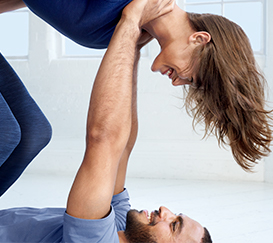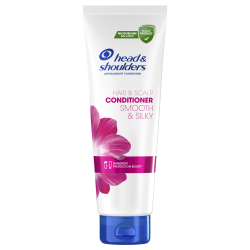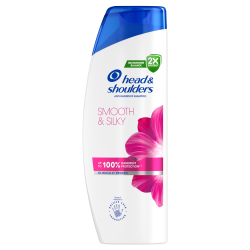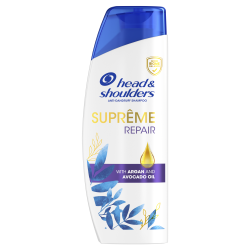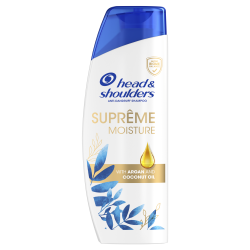How To Blow Dry Hair Properly
- In this article:
- Go to sectionBLOW DRYING SHORT HAIR
- Go to sectionBLOW DRYING MEDIUM LENGTH HAIR
- Go to sectionDRYING LONG HAIR
- Go to sectionBLOW DRYING CURLY HAIR
- Go to sectionHOW TO DRY NATURAL HAIR WITHOUT HEAT
- Go to sectionSTART IN THE SHOWER
- Go to sectionDROP THE TOWEL
- Go to sectionHOW BLOW DRYING HURTS HAIR
- Go to sectionHOW BLOW DRYING HURTS SCALP
- Go to sectionBLOW DRYING WITH DANDRUFF
- Go to sectionHEAT DAMAGE, DRY SCALP, AND DANDRUFF
- Go to sectionLOOK AFTER YOUR SCALP’S MOISTURE
With a little know-how, it’s easy to get the best from your blow dry. Find out how to get healthy, great looking blow dried hair.
Blow drying leaves your hair open to all kinds of damage if not done correctly, thanks to the stream of heat.
Knowing how to blow dry hair properly not only keeps your hair looking good, it keeps it healthier too.
Along with using a shampoo designed to care for your scalp, there are some basic tips that everyone should follow:
Try not to use high heat settings if possible, as this can damage hair. Ideally, the air stream should feel comfortable on the back of your hand
Blow dry your hair from at least 8 inches (20cm) away
Keep the air flowing in one direction, from your roots to the hair’s ends. This keeps the cuticle layers on the outside of your hair smooth, so your hair can be shiny and protected
Keep the dryer moving to avoid too much heat in one spot
Use a heat protectant to protect your hair from damage
Depending on your hair type, you may want to take these tips a step further.
BLOW DRYING SHORT HAIR
For short hair, the goal of blow drying is soft texture and volume:
Focus on the roots first, to give your hair lots of fullness and volume. Lift hair up & away from the scalp while drying, and use styling product at roots for extra lift
When the roots are dry, use a brush to style sections of your hair while you dry the ends
A small amount of gel or pomade can be used in small sections to define layers, creating a polished look and giving your style hold
BLOW DRYING MEDIUM LENGTH HAIR
Like with short hair, the aim here is volume, with smooth strands from root to tip:
Use a volumizer on the roots of wet hair, along with your protectant
If you have bangs, use a round brush, pulling them straight out from your forehead and aiming the dryer’s flow towards the ends
Dry the sides almost all the way through before using a brush on them, then clip your hair up and finish drying while using a brush to pull the hair taut
Now get to work on the top section, pulling the whole lot up at once and drying straight up to give it lift
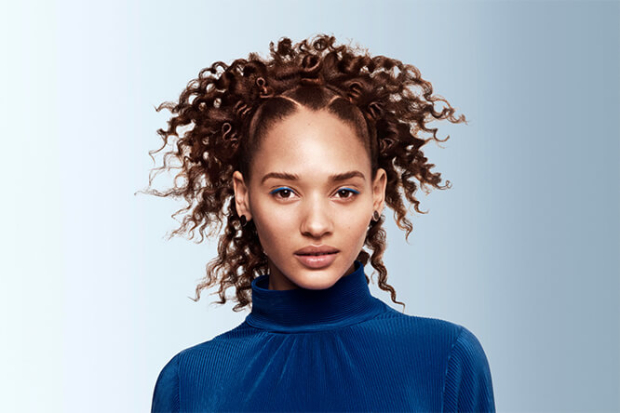
DRYING LONG HAIR
When drying long hair you’ll want to maximize the silky texture, while building body around the hairline. A shampoo that keeps your hair silky smooth will work wonders here:
To start off, dry the roots. Apply just a bit of tension with your fingers, lift hair up & away from the scalp while drying. Use styling product at roots for a little extra lift.
Next, dry your hair almost all the way through
Pull up the top sections of your nearly-dry hair, and secure them with a clip.
Dry the bottom layers of your hair first, using a round brush to apply even tension down the length of each section as you dry it. Keep the hair dryer moving, and keep it a safe distance from your hair to avoid hot spots.
When the under layers of your hair are dry, unclip the next sections, and repeat the process.
BLOW DRYING CURLY HAIR
The goal for curly hair is to create well-formed curls, while avoiding frizziness:
A curl-enhancing product is your friend here. Work it through your wet hair, using a wide toothed comb to distribute it evenly. Twisting small sections of hair will help create smooth, uniform curls
Using you dryer’s diffuser attachment, cup and lift sections with your hands. Don’t scrunch or squeeze the hair, as this can cause frizzing
When it’s nearly dry, flip your hair upside down and massage the roots while drying, to give lift while loosening twisted curls
At this point, you should have a head of dry, beautifully styled hair.
HOW TO DRY NATURAL HAIR WITHOUT HEAT
Natural hair is particularly susceptible to damage from heat, which can leave it looking dry and frizzy.
Not only is heat the enemy of natural hair, it can also damage your scalp, affecting the growth of new health hair and making things even more difficult.
The solution? Use these tips on how to dry natural hair without heat.
START IN THE SHOWER
To dry natural hair easily, you first need to make sure it’s as healthy as possible.
That means using the right shampoo and conditioner to take care of them.
Head & Shoulders is the first shampoo clinically proven to actually improve the quality of the hair that grows from your scalp.
By pairing your shampoo with the matching conditioner, you can help keep it smooth, as your conditioner will help moisturize each hair and smooth down your hair’s outer cuticle layer.
Then you can tackle the drying process with a little more confidence.
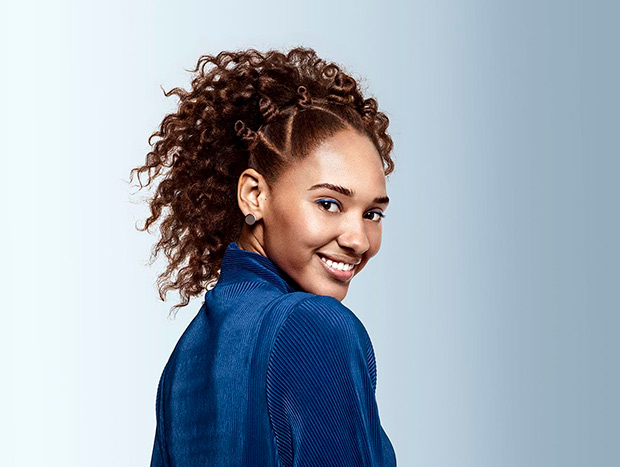
DROP THE TOWEL
While it’s always tempting to jump out of the shower and rub a towel over your hair, this is the sort of treatment that inevitably leads to damage.
Rather, use an absorbent towel, wrap it around your hair and give it a gentle squeeze; this will help remove moisture while protecting your hair as much as possible.
An even better towel alternative is a T-shirt.
A T-shirt’s soft flat surface can be gentler to your hair than the weave of a towel, especially on wet hair – which is when it’s at its weakest.
If you’ve got the time, another way to dry your hair is ‘plopping’:
put your towel or T-shirt on a flat surface
bend over so your hair is dangling over the towel
twist the sides of the towel until your hair is secure on the top of your head, then secure the ends of the towel and go about your routine
Using this method, you can get ready while your hair dries. Once you take the towel off, your hair will look fabulous.
HOW BLOW DRYING HURTS HAIR
The largest problem caused by hair dryers is all about temperature. When you point a too-hot hair dryer at your scalp, a couple of things happen.
First, moisture in the hair is suddenly heated to evaporation point. As this water turns to steam, it creates high-pressure bubbles inside your hair which permanently damage its structure, leaving spots that are especially brittle and prone to breakage.
HOW BLOW DRYING HURTS SCALP
Meanwhile, your scalp can be damaged, as well. Just as hot, dry air from a blow dryer removes water from your hair, it can remove water from your skin. That is a problem for people who are prone to dry, flaky scalp.
And for some people, that’s only the beginning.
BLOW DRYING WITH DANDRUFF
For dandruff sufferers, things can get a lot worse. When skin is healthy, it helps keep us properly hydrated, by regulating the amount of moisture that evaporates into the air.
Dandruff skin is unhealthy – it happens when your skin cells are produced and shed too rapidly, causing visible flakes of skin to appear. Research shows that dandruff skin is especially “leaky,” allowing too much water to escape from our skin and leading to dryness.
This makes dandruff sufferers especially vulnerable to the effects of blow drying, further drying out their skin and leading to a flaking flare-up.
The high heat of a blow dryer on your hair and scalp is not good for it. Your hair is covered in cuticles, a flexible armour that protects hair from harm while your scalp is a layer of skin just lie any other on your body.
Blow drying every day could cause damage to these key areas which are vital for healthy hair.
But blow drying has other consequences as well.
HEAT DAMAGE, DRY SCALP, AND DANDRUFF
When you blow dry your hair, you’re also heating up your scalp.
This causes your scalps natural moisture to evaporate quickly. Plus, you could also be damaging the scalp’s outer layer which acts as a defence to keep essential moisture in.
Do this enough, and you can end up with a dry scalp as well as some of these signs:
itchiness
redness
If you’re prone to dandruff – and around 50% of people are – you may start to see flakes too as the scalp’s natural defences are compromised, opening the door to a dandruff flare-up.
LOOK AFTER YOUR SCALP’S MOISTURE
Moisture is essential for your scalp. What’s more, your hair’s strength comes from a healthy, moisturized scalp.
Scalp dryness can be a sign that your skin is out of balance. You may experience itching and flakes, and your hair can become damaged.
This can cause hair loss in some cases and, in less extreme cases, can cause itching and flakes.
That’s why you need to it with a good shampoo for dry scalp that not only relieves dryness, but also tackles flaking and itching
If you’ve experienced damage from blow drying, you should also choose the right shampoo to bring your hair and scalp back to health.
All Head & Shoulders shampoos fight dandruff with our active ingredient Pyrithione Zinc (ZPT). Use them regularly to help keep dandruff-prone scalp protected and healthy.

